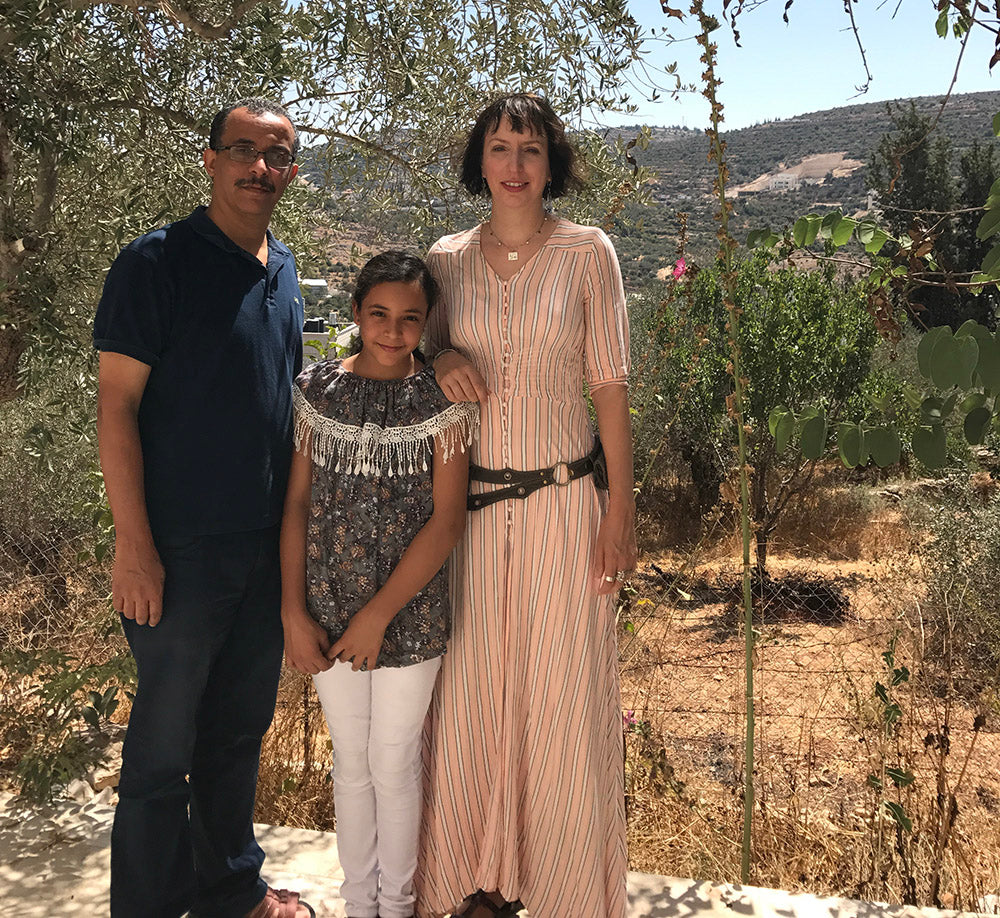
Despite the hurdles, Hebron glass makers keep the kiln fires burning
Artisans in Palestine face huge challenges due to the Israeli occupation, but a family ceramics business is preserving a 500-year-old tradition
Earlier this month I visited the West Bank and stopped in my favorite workshop in Hebron: the Hebron Glass and Ceramics factory.
The first thing you notice when walking into the Hebron Glass and Ceramics Factory is the sizzling temperature; it feels like stepping into an oven. It’s already around 80 degrees outside, but behind the factory’s doors, sweat-drenched workers are cleaning molten glass from the furnace.
Cleaning dirty molten glass from the furnace.
Emad Natsheh, co-owner of the workshop, finishes shovelling scoops of liquid glass from the furnace into a disposal bin. They can no longer be used in the production process.
In another room, artisans are painting designs on ceramic bowls in preparation for firing them in the kiln. The factory employs 60 artisans, responsible for producing a variety of hand-blown glass and cheerful, hand-painted ceramics.
 Hamzeh Natsheh, one of the owners of the family run workshop, says:
Hamzeh Natsheh, one of the owners of the family run workshop, says:
“Our workshop in the old city [of Hebron] started in 1890 by my great grandfather. Hebron has a more than 500-year-old history of ceramics and glass. Ceramics are a part of Palestinian heritage. They were used to cool water before there was refrigeration.”
“One of the things that make this family workshop strong is the relationship between the family members. Everybody that is working here is really passionate about what they are doing and they really want to see it continue as a tradition for the Palestinians,” he adds.

The process to make a single piece takes almost one week. First the clay is put on a pottery wheel and shaped by hand. The next day, after it has dried, the edges are smoothed by hand using water and a sponge. Then the piece is fired in a kiln at 1500 degrees for two days.
After it comes out, the artisans paint the black outlines and fill designs with colours. It is sprayed twice with a shiny, protective glaze and then dipped into the glaze one more time before firing for 24 hours.
“You can see the patterns that are applied on the ceramics also in the local architecture and embroidery. Flowers such as tulips, which are used in the designs, are native to the region,” says Hamzeh.

In the retail store section of the factory, tourists trickle in slowly to browse and purchase the handmade products.
“Twenty busloads of tourists per day used to come by the workshop since the 1970s, but after the Intifada, we are just having individual tourists or political tours by organisations such as Bethlehem-based Alternative Tourism Group and UNRWA [United Nations Relief and Works Agency for Palestine],” he says.

According to Hamzeh, due to Israeli security concerns tourist routes have been changed to head directly to the Ibrahimi mosque, so tourists can avoid roaming through the city.
“Having the tourists is more meaningful to promote the business and speak about the culture. It’s very important to see tourists. It’s important for Palestinians not to feel isolated,” he says.
Hamzeh says that he used to easily transfer his products to Haifa Port before the Second Palestinian Intifada in the year 2000. Since then, his merchandise has to pass through several checkpoints and there are restrictions on Palestinians from the West Bank crossing to Haifa Port. This causes delays, a hike in expenses and makes the transfers difficult.

“It’s getting harder and harder. Since 2001 and the beginning of the Second Intifada, things changed rapidly and there were restrictions on the businesses all over Palestine,” he says. “A full truck load [costs] about $1200 to take it from Hebron to the port. Before the checkpoints, it used to be around $500.”
Hamzeh says they now depend on local shops and exports abroad which represent 50-60 percent of their production to make profits, but the challenge is finding new markets.
“We depend on our partners in the United States, Canada and Europe who are doing a great job telling our story. Fortunately we switched to exports so our revenue didn’t go down,” he says.
Local Palestinians are an important part of the market as well Hamzeh explains: “It’s a way for them to be proud of the Palestinian culture. They use it for serving food and drinks in their homes.”
Holyland Handicraft Society Cooperative is a fair trade cooperative of West Bank artisans in Beit Sahour which sells carved olive wood figurines, ceramics, mother-of-pearl jewellery, and embroidery. The cooperative was founded in 1981 as a response to the deterioration of tourism to the Bethlehem area due to the Israeli occupation.
Basma Barham, the cooperative’s manager, echoes Hamzeh regarding the problems faced by artisans in the West Bank:

“Sometimes when we have to receive goods from outside, it can take three months for the Israelis to release the shipment. And sometimes they don’t take care of items that need refrigeration,” Basma tells MEE.
According to Barham, they use olive wood from Nablus to create their products. Big trucks carrying the wood have to pass through several Israeli checkpoints.

“They (Israeli soldiers) can say ‘sorry, the road is closed so you have to return.’ So we have to do this again the next day. And we have to pay the driver again,” she says.
“These are things that in each day of our life nobody knows about. It’s the routine that we have. Many times we have a deadline to send the shipments abroad and we find out that the roads are closed and we have to explain this to the customers who can’t understand because they are not here.”


Leave a comment
This site is protected by hCaptcha and the hCaptcha Privacy Policy and Terms of Service apply.